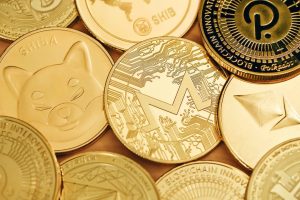The foreign exchange market, also known as forex, is the largest financial market in the world, with a daily turnover exceeding $5 trillion. It is a decentralized market where currencies are exchanged between buyers and sellers, and it operates 24 hours a day, five days a week. But when did this market open? Let’s take a closer look at the history of forex.
The origins of forex can be traced back to ancient times when people used to trade goods and services with each other. However, the modern forex market as we know it today started to take shape in the 19th century when countries began to adopt the gold standard. Under the gold standard, each country’s currency was pegged to a fixed weight of gold, and the exchange rates between different currencies were determined by their respective gold values.
The first official forex market was established in Amsterdam in the 17th century. It was known as the Amsterdam Stock Exchange, and it allowed traders to buy and sell shares of the Dutch East India Company. The exchange also facilitated the trade of other commodities and currencies, including bills of exchange and promissory notes.
In the 18th century, London emerged as a major financial center, and it soon became the hub of the world’s currency trading. The London Stock Exchange was established in 1801, and it played a significant role in the development of the forex market. The exchange allowed traders to buy and sell government bonds and other securities, and it also facilitated the trade of foreign currencies.
In 1913, the Federal Reserve Act was passed in the United States, which created the Federal Reserve System. The Federal Reserve System is the central bank of the United States, and it has the authority to regulate the country’s monetary policy. The creation of the Federal Reserve System marked the beginning of the modern era of forex trading.
During World War I, the gold standard was temporarily suspended, and currencies were allowed to float freely against each other. This led to increased volatility in the forex market, and it became more difficult to predict exchange rates. After the war ended, the gold standard was reinstated, and forex trading resumed under a more stable environment.
In 1944, the Bretton Woods Agreement was signed, which established a new international monetary system. Under the Bretton Woods system, the US dollar was pegged to gold, and other currencies were pegged to the US dollar. This created a fixed exchange rate system, which made it easier for countries to trade with each other. The Bretton Woods system remained in place until 1971, when the US government ended the convertibility of the US dollar to gold.
After the collapse of the Bretton Woods system, currencies were allowed to float freely against each other, and the forex market became more decentralized. Advances in technology also played a significant role in the development of the forex market. The advent of the internet and electronic trading platforms made it easier for traders to access the market and execute trades.
Today, the forex market is open 24 hours a day, five days a week. It is a global market, with traders from all over the world participating in the buying and selling of currencies. The market is highly liquid, and it offers traders a wide range of opportunities for profit.
In conclusion, the forex market has a rich history that dates back centuries. From its origins in Amsterdam to its current state as the largest financial market in the world, the forex market has undergone significant changes and developments throughout the years. The market has become more decentralized, more accessible, and more liquid, making it an attractive option for traders of all levels of experience.





